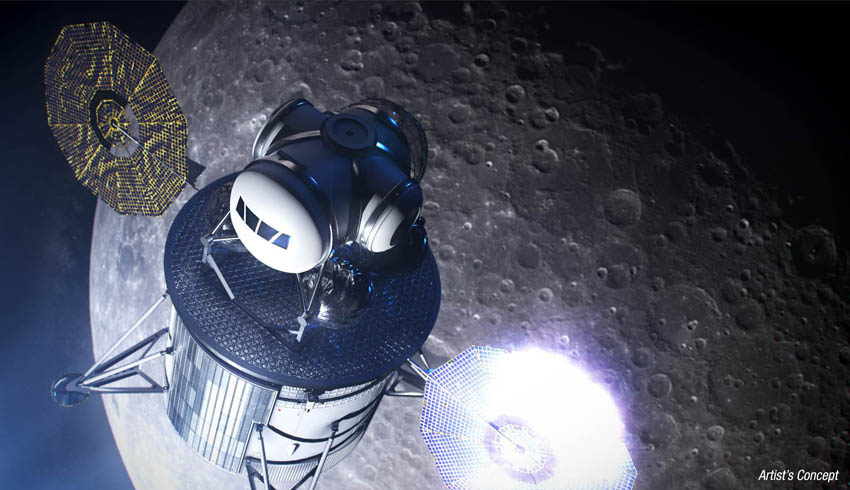That’s four years sooner than originally planned and requires a the program to be substantially sped up.
Marshall Smith, NASA director for human lunar exploration programs, said to accelerate the return to the moon, NASA was challenging traditional ways of doing business.
“We will streamline everything from procurement to partnerships to hardware development and even operations,” he said.
“Our team is excited to get back to the Moon quickly as possible, and our public/private partnerships to study human landing systems are an important step in that process.”
What’s called the Artemis lunar exploration program will help put American astronauts — the first woman and next man — on the moon’s south pole by 2024 and establish a sustainable presence by 2028.
The proposed plan is to transport astronauts in a landing system from the Gateway outpost orbiting the moon to the surface, then back. NASA is looking at refueling capabilities to make these systems reusable.
Throughout these missions, Australia will participate through the Tidbinbilla tracking station outside Canberra.
Through Next Space Technologies for Exploration Partnerships (NextSTEP) contracts, chosen companies will study and/or develop prototypes during the next six months.
The total award amount for all companies is US$45.5 million. NextSTEP is a public/private partnership program and companies are required to contribute at least 20 per cent of the total project cost.
The chosen companies include Blue Origin, the US space company set up by Amazon founder Jeff Bezos, which earlier this month revealed its concept for a moon lander. Boeing will do substantial work — a descent element study, two descent element prototypes, transfer vehicle study and prototype, refuelling element study prototype.
The big primes – Boeing, Lockheed Martin and Northrop Grumman – will all participate, conducting studies and doing work on prototype descent element, transfer vehicles and refueling systems.
Elon Musk’s SpaceX will conduct a study on a descent element.
To speed up this work, NASA will be able to authorise partners to start work while contract award negotiations are under way.
“We’re keen to collect early industry feedback about our human landing system requirements, and the undefinitised contract action will help us do that,” said Greg Chavers, human landing system formulation manager at NASA’s Marshall Space Flight Center in Huntsville, Alabama.
NASA gave industry an early warning of its plans last month, advising of its intention to partner with American companies on development of a moon lander.
NASA said this would build on its work to develop the Space Launch System rocket and Orion spacecraft.

